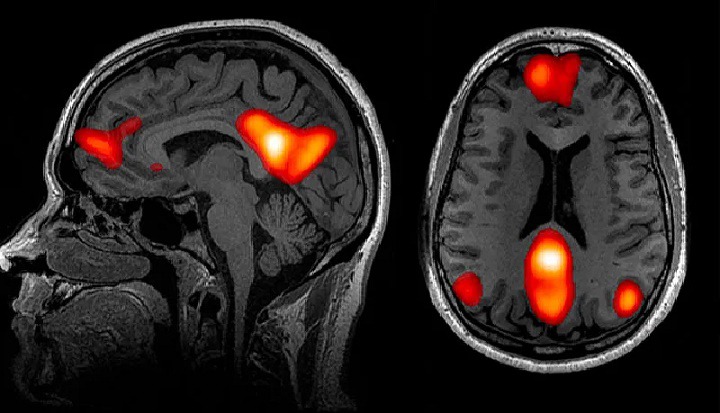The feeling of loneliness creates changes in the brain that make a person move away from social relationships. In addition to isolating a person, loneliness changes the brain, affecting the ability to trust and communicate with others. In the following, we describe the effects of loneliness on the brain and the reasons for loneliness from the point of view of neuroscience. In the end, we will give solutions to get rid of loneliness.
The effect of loneliness and isolation on the brain
The Neumayer III polar station is located near the edge of the Ekström Ice Shelf in Antarctica. During winter, no one can go to or leave the station when the temperature drops below minus 50 degrees Celsius, and the wind speed can reach more than 100 kilometers per hour. These station conditions are necessary for meteorological, atmospheric, and geophysical experiments. Therefore, few scientists endure the cold and isolation at the workstation during winter.

A few years ago, this station also became a place for research on loneliness. A group of scientists in Germany wanted to investigate the effect of social isolation and environmental monotony on the brains of those who had extended stays in Antarctica. 8 astronauts who worked at the Neumeyer station for 14 months agreed to have their brains scanned before and after the mission and their brain chemical composition and cognitive performance were also examined during their stay at the station.
Based on the description of the researchers in 2019, the volume of the prefrontal cortex of the isolated group was reduced compared to the control group. The prefrontal cortex is in front of the brain and behind the forehead. This part of the brain is responsible for decision-making and problem-solving. They also had a lower level of the brain-derived neurotrophic factor. The neurogenic factor is a protein that causes the growth and survival of nerve cells in the brain. This decrease continued for at least a month after the team returned from Antarctica.
It is unclear how much of this change was due to their social isolation. But these results are consistent with the evidence obtained from more recent research; According to this evidence, chronic loneliness changes the brain in a way that increases loneliness and isolation.
What is the reason for loneliness?
According to neuroscience, loneliness is not necessarily caused by a lack of opportunities to meet others or a fear of social interactions. Instead, circuits in the brain and changes in behavior can put us in the situation of Note 22; that is, while we want to communicate with others, we find them unreliable, judgmental, and unfriendly. As a result, we maintain our distance and consciously or unconsciously reject potential opportunities for communication.
Note 22 is a contradictory situation we cannot escape due to conflicting laws. For example, we cannot be employed because we do not have work experience, and because we have not been used anywhere, we cannot have work experience.
When neuroscientists began researching loneliness, they expected the results to show that the neural origins of loneliness are the same as the neural origins of social anxiety and that the amygdala is involved in the brain. The amygdala is called the brain’s fear center, and it’s usually activated when we encounter scary things, from snakes to other humans. “We thought that social anxiety was associated with increased amygdala activity, so the same should be true for lonely people,” says Jana Lieberz, a Ph.D. student at the University of Bonn in Germany and a member of the research team.
However, according to a study published by this team in 2022, although threatening social situations cause more amygdala activity in people with social anxiety, they do not have the same effect on lonely people. In addition, training in the brain’s reward regions is reduced in people with social anxiety, but this does not seem proper for lonely people.
“The core features of social anxiety were not evident in loneliness,” Liebers says. According to him, these results show that it is not possible to treat loneliness by simply encouraging lonely people to go out and socialize because it does not address the root cause of loneliness. A meta-analysis also showed that providing easier access to potential friends did not affect subjective loneliness.
The main problem is that loneliness affects our thinking. In behavioral studies, subjects only perceived negative social signals such as rejection images within 120 ms, two times faster than people with good relationships with others and half the time it takes to blink. In addition, lonely people preferred to stay away from strangers, were less trusting of others, and disliked physical contact.
Danilo Bzdok, an interdisciplinary researcher at McGill University, says: “Perhaps this is because the emotional health of lonely people is often like a downward spiral. “They usually have a more negative perception of any information they receive, such as facial expressions, text messages, or whatever, and this pushes them further down the lonely pit.”
The relationship between loneliness and the brain’s default network
Bezduk and his colleagues conducted an extensive study to find signs of loneliness in the human brain. They used data from the UK Biobank. (A biomedical database containing brain scans of about 40,000 people living in the UK and information about their social isolation and loneliness.)
According to their research, the results were published in the scientific journal “Nature Communications” in 2020; the sensitive point of loneliness in the brain is located in the default network. The default network is part of the brain that is activated when we are mentally alert. “Until 20 years ago, we didn’t even know we had this system,” Bezduk says. But research has determined that activity in the default network consumes the most energy in the brain.
Bezduk and his team showed that some areas of the default network are more significant in people with chronic loneliness and have stronger connections with other brain parts. The default network involves many distinct abilities that have evolved in humans, such as language, predicting the future, and causal reasoning. Generally, the default network is activated when we think about others, such as interpreting what they mean.

Research on default network connectivity provided neuroimaging evidence that confirmed earlier discoveries by psychologists. Findings that lonely people tend to daydream about social interactions, easily miss past social events, and even imagine their pets as human; For example, talk to your cat as if it were a human. “We need the default network to do that as well,” says Bezduk.
Loneliness can lead to a fruitful imaginary social life and cause real-life social encounters to create less satisfaction in a person. Probably one of the reasons for this issue was identified in a 2021 study by Bezduk and his colleagues based on the abundant data from the British Biobank. Bezduk and colleagues examined people with social isolation and little social support. The researchers found that the orbitofrontal cortex of all these people was more minor. The orbitofrontal cortex is the reward-processing part of the brain.
By examining the brain images of more than 1,300 Japanese volunteers, it was found that greater loneliness is associated with stronger functional connections in the area of the brain that controls visual attention. This finding corroborates previous eye-tracking studies, which show that individuals focus excessively on unpleasant social cues, such as being ignored by others.
The desire of lonely people to connect with others
Although people find their only interactions uncomfortable and worthless, they still strongly desire to connect with others. Dr. John Cacioppo, a neuroscientist at the University of Chicago, nicknamed the “Loneliness Doctor” for his research, hypothesized that loneliness is an evolutionary adaptation that indicates something is not right in our lives. Just as hunger makes us look for food, loneliness also makes us look for connection with others. For our ancestors in the African savanna, whose survival depended on living in groups, the motivation to connect with others was a matter of life and death.
Recent brain imaging data show that loneliness is deeply rooted in our psyche. Livia Tomova, a research assistant in neuroscience at the University of Cambridge, and her colleagues asked 40 people to fast for 10 hours. They then scanned their brains while looking at pictures of delicious foods. Then the same volunteers spent 10 hours alone without a phone, e-mail, or even a storybook that could be a substitute for communicating with others. Then their brains were scanned again, but this time while they were looking at pictures of happy groups of friends. By comparing the brain scans of these people, scientists observed that the patterns of brain activation during hunger and loneliness are very similar.
According to Tomova, this experiment emphasizes an essential truth about loneliness; If just 10 hours of no social contact is enough to trigger the same neural signals as food deprivation, “that shows how fundamental our need to connect with others is.”
Effects of loneliness on brain size
Recent research confirms an evolutionary theory called the social brain hypothesis. According to this hypothesis, busy social life is associated with a larger brain. Monkeys living in captivity in larger social groups or caged with more monkeys have larger brains. The gray matter in the prefrontal cortex in the front of the brain of these monkeys is also more.
According to research, humans are not much different from them. According to a 2022 study, older adults have atrophied in only parts of the brain, including the thalamus ( emotion processing center ) and the hippocampus ( memory center ). (Atrophy means the loss of brain cells called neurons) According to the researchers, these changes explain the relationship between loneliness and dementia.
Of course, there is also a chicken-and-egg question about all these findings: make brain differences make us prone to loneliness, or does loneliness cause the brain to change and shrink? According to Bezduk, it is currently not possible to solve this mystery. But he believes that both situations can be actual.
The study of monkeys and the Neomayer 3 polar station results show that experience and the social environment can significantly affect the brain’s structure and stabilize and make permanent the changes caused by loneliness. On the other hand, the study of twins has also shown that loneliness is partly hereditary, and almost 50% of the changes in people’s feelings of loneliness can be related to genetic differences.
Effects of loneliness on health
Loneliness doesn’t just feel bad; it also affects our health. Loneliness can lead to high blood pressure, stroke, and heart disease. It can also double the risk of type 2 diabetes and increase the chance of dementia by 40%. As a result, people with chronic loneliness are 83% more at risk of death than those who feel less isolated and lonely.
Freedom from loneliness

Organizations and governments often try to help reduce loneliness by encouraging people to get out more and start fun clubs, communal gardens, and craft groups. Still, neuroscience shows that getting rid of loneliness isn’t always easy.
According to research, cognitive therapies can be effective in reducing loneliness. To do this, we can help people understand the role of their behaviors and thought patterns in preventing valuable connections.
Leibers and his colleagues examined the brain activity of people who played a trust game. In the brain scan of people, the movement of only one brain area was much less than that of social people. Leibers explained that this region (insula) is usually activated when we check our intuitive feelings. “Maybe that’s why it’s so difficult for lonely people to trust others,” he says. “They cannot rely on their [gut] feelings.” Therefore, carrying out interventions that target a person’s confidence can be a solution to get rid of the situation of Note 22 of loneliness.
Another solution is to encourage people to comply. According to the research, one of the essential points about the level of interest and trust people have in each other is how well their behaviors and reactions match each other. Adaptation between people can be something as simple as a mutual smile, repeating the other person’s body language during a conversation, or something as complex as singing in a choir or being on a rowing team. Leibers and his colleagues showed that people only have trouble synchronizing with others, and this inconsistency causes problems in the areas of their brains responsible for observing actions. Teaching lonely people how to get along with others can be another strategic intervention to eliminate loneliness. This alone won’t cure them, but it “could be a starting point,” Liebers said.
If all these solutions fail, chemical treatments may be used. In a trial conducted in Switzerland, volunteers said they felt less socially ostracized after taking psilocybin. (Psilocybin is the psychoactive compound found in magic mushrooms.) Their brain scans also showed less activity in areas that process upsetting social experiences.
Although interventions such as cognitive behavioral therapy, increased trust and compliance, or even eating magic mushrooms can help treat chronic loneliness, the fleeting feeling of loneliness will always remain a part of the human experience.
you say
In this article, we examined the effects of loneliness on the brain and the reasons for people’s loneliness and isolation. How effective do you think the suggested solutions can be in dealing with loneliness and increasing social relationships?
Warning! This article is only for educational purposes; to use it, it is necessary to consult a doctor or specialist.



